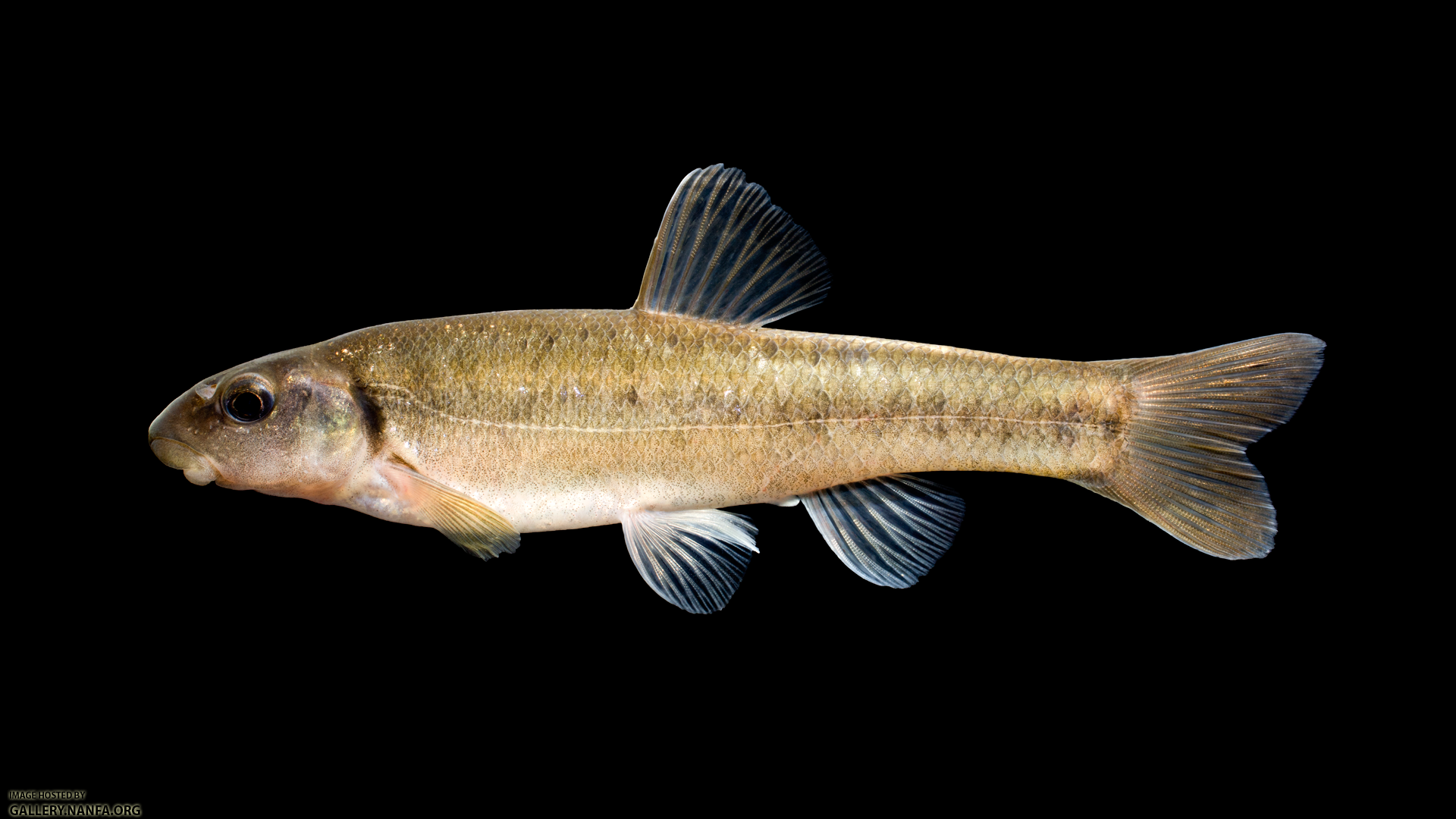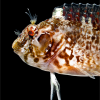Hi Corey,
I second everything Dustin and Matt have said, and here are a few pointers/ramblings:
1. I think your flash's spread will be too wide at that height, try hand holding it and zooming in (with the flash, not your lens). You do not want to light up the background at all.
2. The black lip on that tank may interfere with proper lighting. I tried using that same tank when I first started, quickly got rid of it.
3. As Matt noted, try blacking out the back of the tank, and holding your flash more in front. I use black towels. You do not want to just have something black directly behind the tank, you want to add some depth between the back of your tank and the black background. This will help create a more uniform black. You don't want ambient light inside the tank.
4. Get rid of those bubbles! I had a bad experience at the Missouri convention because I used a new brand of black spray paint that bubbled non stop! (I make custom tanks, and spray the sides black)
5. Avoid shooting too close to the edges of that tank, as the clear silicone can scatter the light in ways you do not want.
6. Shoot somewhere near here: 1/200 f18 ISO 100. Flash in manual, say 1/4 power and adjust the height as necessary. Don't shoot TTL as your camera doesn't know how far your flash is from the fish.
7. Always shoot raw so that you can post process.
8. You can manage with one flash, if you are shooting smaller fishes and don't mind shadows. I think shadows add depth to the shot, but some people prefer to completely illuminate their fish. With anything larger than say hand size, you need two flashes in the method Dustin described.
9. Be prepared to edit out a lot of cyans in post. The green/blue glass on that tank will add a lot of them to the fins of the fish.
10. Use a macro lens. A short focal length one is ideal.
11. Clean water (bubble free!)
12. Don't use a small piece of plexi glass to compress the fish, use a large one! I use one that takes up a majority of the tank. Again, that black rim may interfere with this. Take it off if you can.
13. Lastly, use a kabob skewer or something similar to move the fish once you have it in place.
If you have any other questions, just ask!
Here is a shot I took using this method this weekend.















